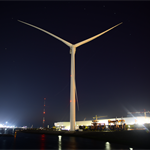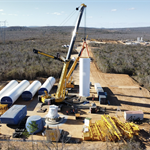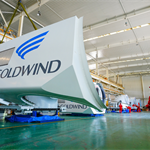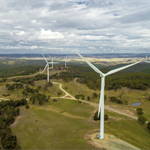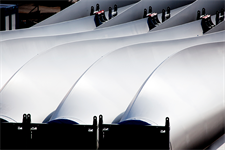Interview: China’s Goldwind eyes new horizons with Brazil wind turbine factory
Energy Disrupter
China’s Goldwind is seeking out new markets as it launches its first turbine factory in Brazil, CEO Cao Zhigang told Windpower Monthly in an interview.
Speaking after the inauguration of the plant in Camaçari in the north-eastern state of Bahia on 27 August, the executive highlighted the company’s emphasis on developing businesses inserted into local economies as it expands globally.
“Goldwind’s strategy of globalisation is conducted through localisation: Localisation of supply chain, of financing, local talents, as well as corporate social responsibility activities,” Cao said.
Goldwind has been drawn to Brazil’s rapidly growing energy market, which is expected to add 27GW of capacity over the next five years, half of which could come from wind, the government has said.
A drop in power tariffs and infrastructure bottlenecks have slowed connections since last year. But increased investment to bolster transmission capacity, linking the windy north-east to population centres further south, should facilitate new wind farms coming online during the rest of the decade.
“It’s a sizable market and a sustainable one,” noted Cao (below).

Goldwind turbines account for a small portion of Brazil’s wind power fleet: just 682MW of the 31.8GW installed in the country, according to Windpower Intelligence, the research and data division of Windpower Monthly. But the Chinese company hopes to increase this figure.
Goldwind acquired the Camaçari plant from GE and has invested around BRL 100 million ($17 million) in the project including the acquisition and supply chain development. The plant will create more than 100 direct jobs and 5,000 indirect posts in the Brazilian supply chain that Goldwind has been developing since 2021.
The factory has been prepared to produce Goldwind’s GWH182 platform of turbines, which feature a range of power ratings, from 5.3MW to 7.5MW.
But the executive admits that the real incentive for developing manufacturing capacity in the country are local content laws that require a certain proportion of generation to have been sourced domestically in order to qualify for preferential loans from state bank BNDES.
“The financing actually defines to what extent we are localising,” Cao noted.
During the inauguration ceremony, Goldwind received its accreditation under BNDES’ Finame program for supporting domestic manufacturing, covering the whole of its GWH182 turbines’ system, including blades, towers and casting parts.
“Our participation in the Brazilian market can help revive local industry and help it to thrive again,” the executive explains.
The company has chosen to produce the larger capacity turbines based on the potential it sees in Brazil’s wind market.
“We matched the turbine models to be marketed with the local wind characteristics and found this turbine the most suitable,” explains Cao.
Goldwind expects to start producing 150 turbines – with a combined capacity of around 1GW – annually at the plant from around 2026.
Should the demand exist, then the potential could be met by introducing efficiencies to the plant that could double turbine production to up to 300 turbines annually or around 2GW of capacity.
Given the difficult logistics in much of Brazil’s windy hinterland, the company has made a series of modifications to its design to facilitate installation.
For example, the drivetrain system can be separated from the nacelle structure, thereby reducing the weight of each component, and also enabling them to be transported separately, reducing the need for on-site lifting capacity.
Beyond Brazil
Goldwind’s new factory (below) could also supply other nearby wind markets, said Cao, highlighting the potential in Argentina and Chile.

“As well as the Brazilian market, with a further improved competitiveness of the supply chain and manufacturing, we believe our Brazilian production can also cover the South American market.”
The company is also looking further afield, noting the proximity of Brazil both to North America and sub-Saharan Africa, although without firm plans yet.
“This is more a long-term possibility that we are discovering,” he noted.
Goldwind’s globalisation via localisation strategy could see the company setting up factories in new regions. Two strong possibilities are the Middle East and Central Asia.
“We have to dynamically measure and make our choice,” said Cao.
Offshore potential
The other opportunity facing Goldwind is Brazil’s huge offshore wind potential. Investors have applied to environmental agency Ibama for licences to install more than 200GW of offshore turbines, or almost seven times Brazil’s onshore wind capacity.
For now, Goldwind is sceptical about how quickly this potential will be realised especially given the size of Brazil’s untapped onshore capacity as well as the higher costs involved.
Nevertheless, the company could be a major supplier to the industry once investment takes off.
Goldwind has recently completed installation of its 16MW wind turbine, especially designed for large offshore arrays such as those planned in Brazil.
But for the lack of local manufacturing capacity will be a bottleneck to producing the turbine in Brazil
“If we want to localise the manufacturing of the offshore turbine with the current supply chain capacity and capability in the Brazilian market, a large size turbine will still be very difficult,” Cao explained.



